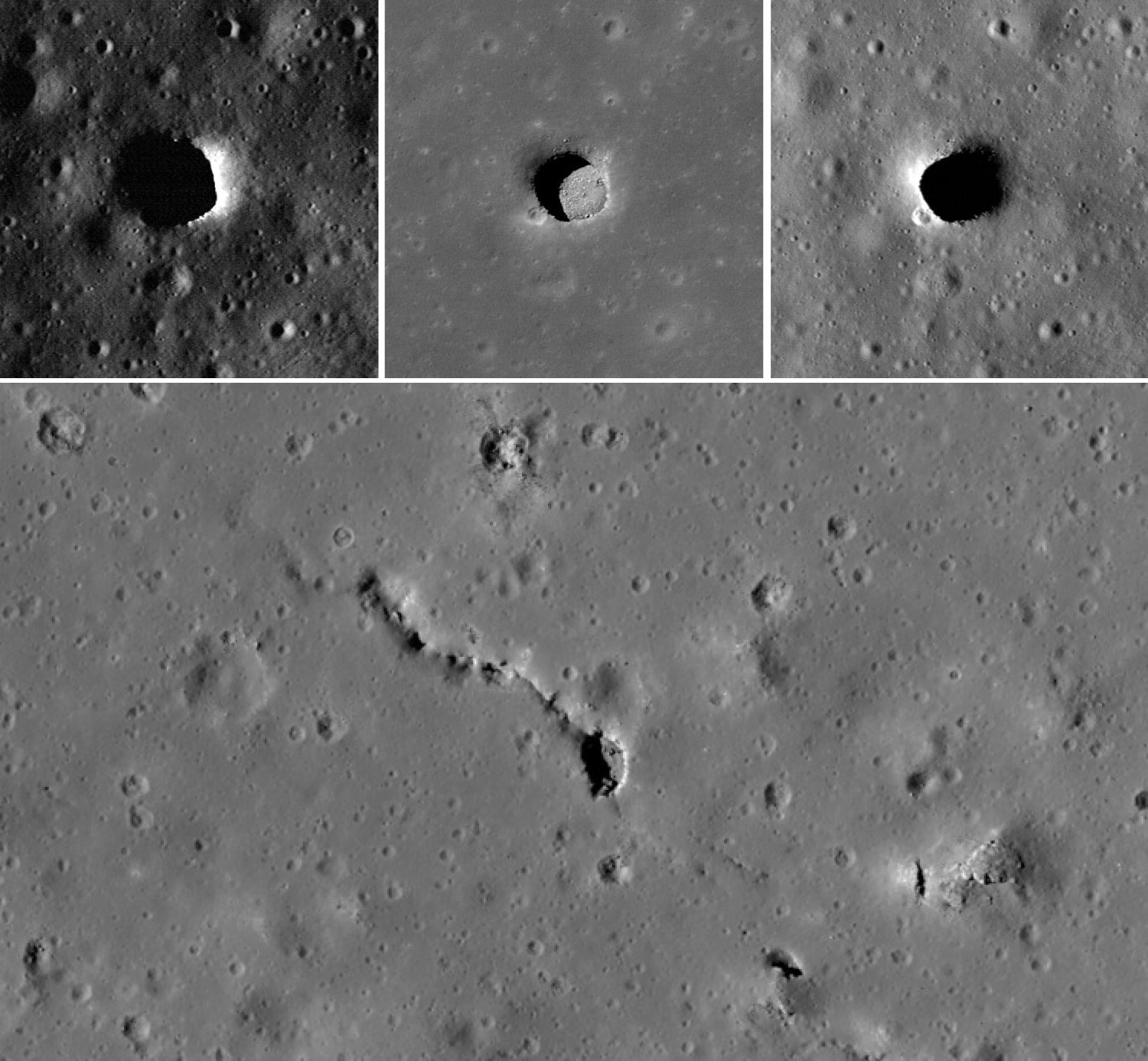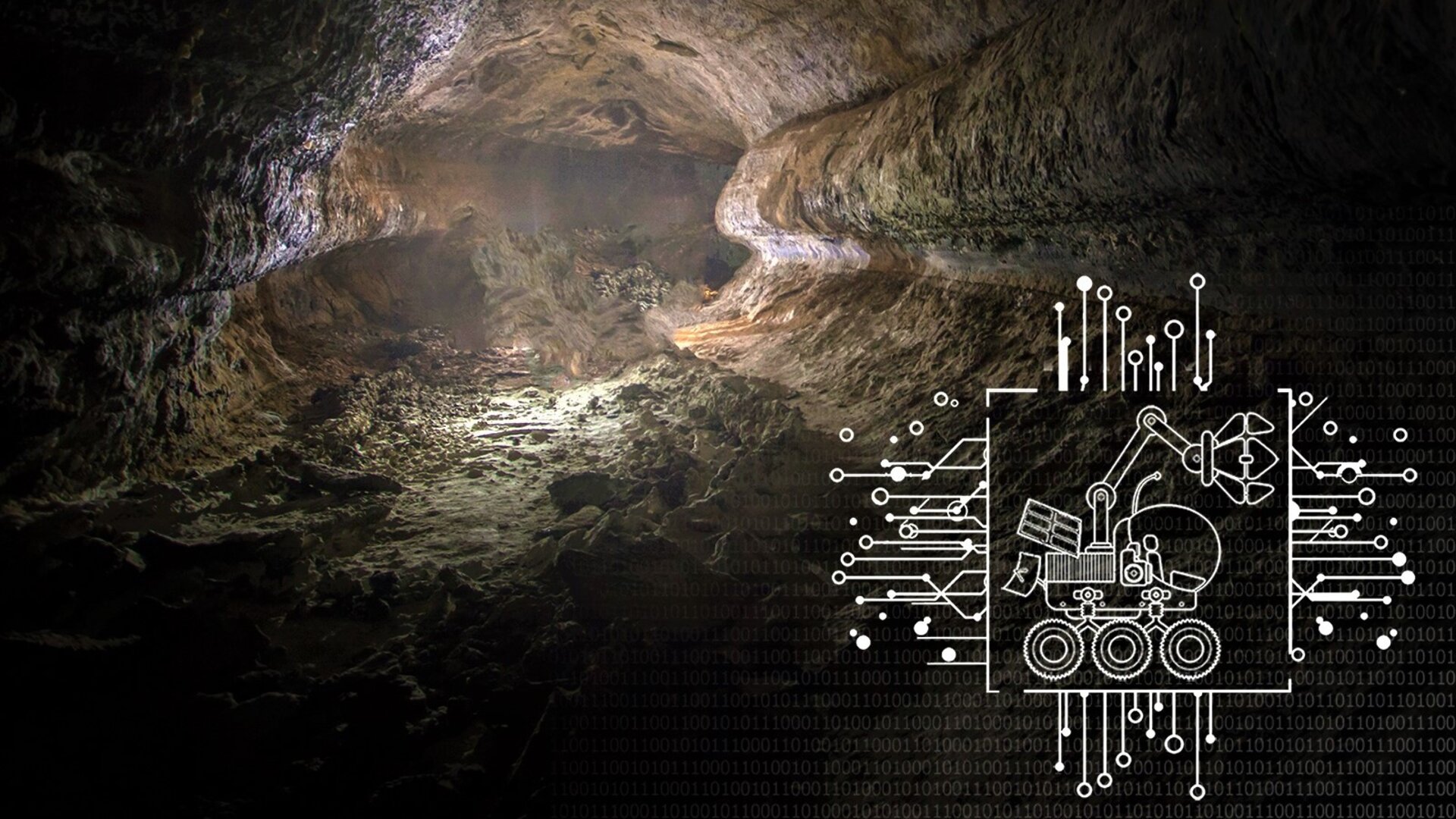Lunar Cave Exploration History

Nasa moon caves – The exploration of lunar caves has a long and challenging history, dating back to the early days of space exploration. Caves on the Moon have long been of interest to scientists, as they could potentially provide shelter from radiation and other hazards, as well as access to resources such as water and minerals.
One of the earliest attempts to explore a lunar cave was made by the Soviet Union’s Luna 16 mission in 1970. Luna 16 successfully landed on the Moon and collected a sample of lunar soil, but it was not able to enter a cave. The first successful exploration of a lunar cave was made by the United States’ Apollo 15 mission in 1971. Apollo 15 astronauts David Scott and James Irwin entered the Hadley Rille cave, which is located on the Moon’s Hadley-Apennine region.
Challenges and Advancements
The exploration of lunar caves presents a number of challenges. One of the biggest challenges is the lack of light. Caves on the Moon are typically very dark, and astronauts must use artificial light to see. Another challenge is the presence of dust. Lunar dust is very fine and can be easily inhaled, which can cause respiratory problems. Additionally, lunar caves can be very cold, and astronauts must wear special suits to protect themselves from the cold.
The recent discovery of moon caves by NASA has sparked renewed interest in lunar exploration. These caves could potentially provide shelter for future astronauts and serve as a base for scientific research. Elon Musk , the founder of SpaceX, has expressed his interest in sending humans to the moon and establishing a permanent lunar base.
If successful, Musk’s mission could lead to the exploration of these moon caves and the potential discoveries they hold.
Despite these challenges, there have been a number of advancements in lunar cave exploration in recent years. One of the most significant advancements is the development of new technologies that allow astronauts to explore caves more safely and efficiently. For example, the use of lasers has allowed astronauts to map caves in three dimensions, and the use of robots has allowed astronauts to explore caves that are too dangerous for humans to enter.
In the enigmatic depths of the moon’s caves, where shadows dance and secrets whisper, one can’t help but wonder about the cosmic implications of Glenn Youngkin’s religious beliefs. While the vast expanse of space and the complexities of faith may seem worlds apart, their convergence within the human psyche offers a glimpse into the interconnectedness of our existence.
As we contemplate the mysteries hidden within the moon’s depths, let us also ponder the enigmatic beliefs that shape the hearts and minds of those who lead us, for in their choices lies the potential to illuminate or obscure the path we tread.
Potential Scientific Significance of Lunar Caves

Lunar caves, formed by ancient volcanic activity and subsequent erosion, offer a unique and potentially valuable scientific resource. Their geological formations, stable environmental conditions, and potential for preserving ancient life or resources make them significant targets for future lunar exploration.
Geological Implications
- Caves provide insights into the geological history of the Moon, including the formation and evolution of its crust and mantle.
- The study of cave minerals can reveal information about past volcanic and hydrothermal activity, as well as the presence of water or other volatiles.
- Caves can preserve ancient geological formations that have been eroded or altered on the Moon’s surface, providing a record of past environmental conditions.
Biological and Astrobiological Implications
Lunar caves offer a unique environment for the preservation of ancient life or organic matter. The stable temperature and humidity conditions within caves may have allowed for the survival of microorganisms or organic compounds over billions of years.
- Caves can provide protection from harmful radiation and extreme temperature fluctuations, creating potential habitats for microbial life.
- The presence of water or ice in caves could support the existence of subsurface ecosystems or provide evidence of past liquid water on the Moon.
- The study of cave environments and their potential for habitability could contribute to our understanding of the origins of life and the search for life beyond Earth.
Resource Potential
Lunar caves may also hold valuable resources for future lunar exploration and settlement. These resources could include:
- Water or ice, which is essential for human habitation and scientific research.
- Minerals and metals, which could be used for construction, manufacturing, or other purposes.
- Volcanic gases, which could be used for energy production or other industrial applications.
Future Exploration and Utilization of Lunar Caves: Nasa Moon Caves

The exploration of lunar caves has emerged as a captivating frontier in space exploration, offering unprecedented opportunities for scientific discovery and future human habitation. As technology advances and our understanding of the lunar environment deepens, plans are underway for ambitious missions to delve into these enigmatic underground worlds.
Current Plans and Aspirations, Nasa moon caves
NASA’s Artemis program, a comprehensive plan to return humans to the Moon, includes dedicated missions focused on lunar cave exploration. The Artemis III mission, scheduled for 2025, aims to send astronauts to the lunar South Pole, where numerous caves have been identified. These missions will conduct extensive surveys and sample collection to characterize the caves’ geological and environmental conditions.
In addition, international collaborations are playing a significant role in lunar cave exploration. The European Space Agency (ESA) and the Japanese Aerospace Exploration Agency (JAXA) are developing robotic missions to explore caves on the Moon’s far side, where communication with Earth is challenging but scientific potential is immense.
Potential Benefits of a Permanent Lunar Base in a Cave
Establishing a permanent lunar base within a cave offers a multitude of advantages:
- Protection from Radiation and Meteorites: Caves provide natural shielding from harmful cosmic radiation and meteor impacts, ensuring the safety of astronauts and equipment.
- Stable Temperature and Humidity: Caves maintain a relatively stable temperature and humidity, reducing the need for complex environmental control systems.
- Access to Resources: Caves may contain valuable resources, such as water ice and minerals, which could be utilized for life support and scientific research.
- Scientific Value: Caves offer unique geological and biological environments that can provide insights into the Moon’s history, evolution, and potential for life.
However, establishing a permanent base in a cave also presents challenges, including:
- Accessibility: Caves can be difficult to access, requiring specialized equipment and navigation techniques.
- Power Generation: Caves may have limited access to sunlight, necessitating alternative power sources.
- Waste Management: Disposing of waste in a confined environment requires careful planning and technology.
Despite these challenges, the potential benefits of a permanent lunar base in a cave make it an enticing prospect for future human exploration.